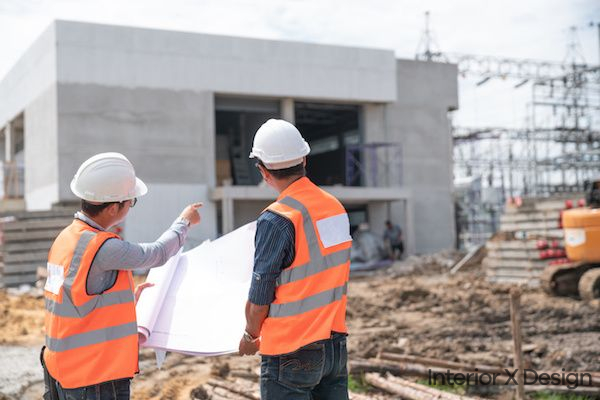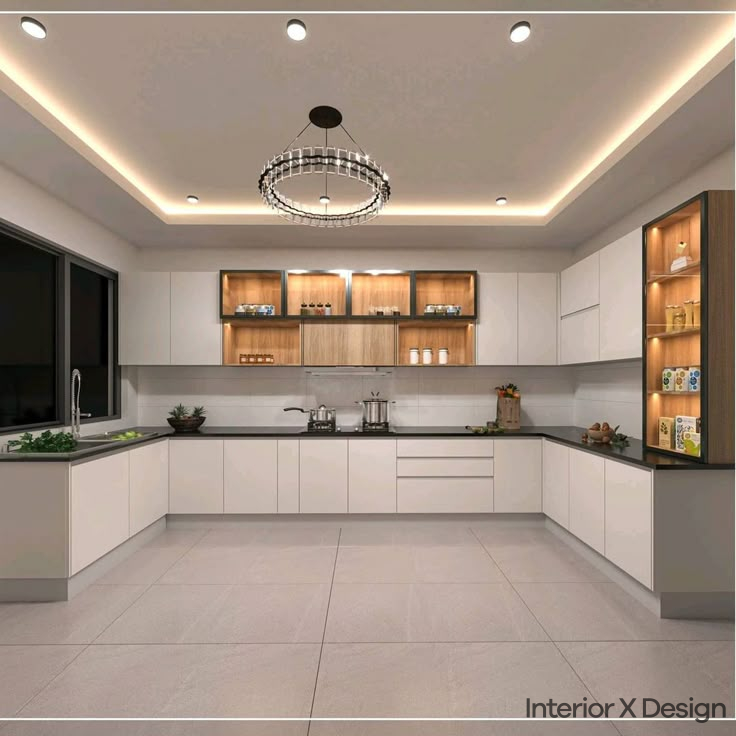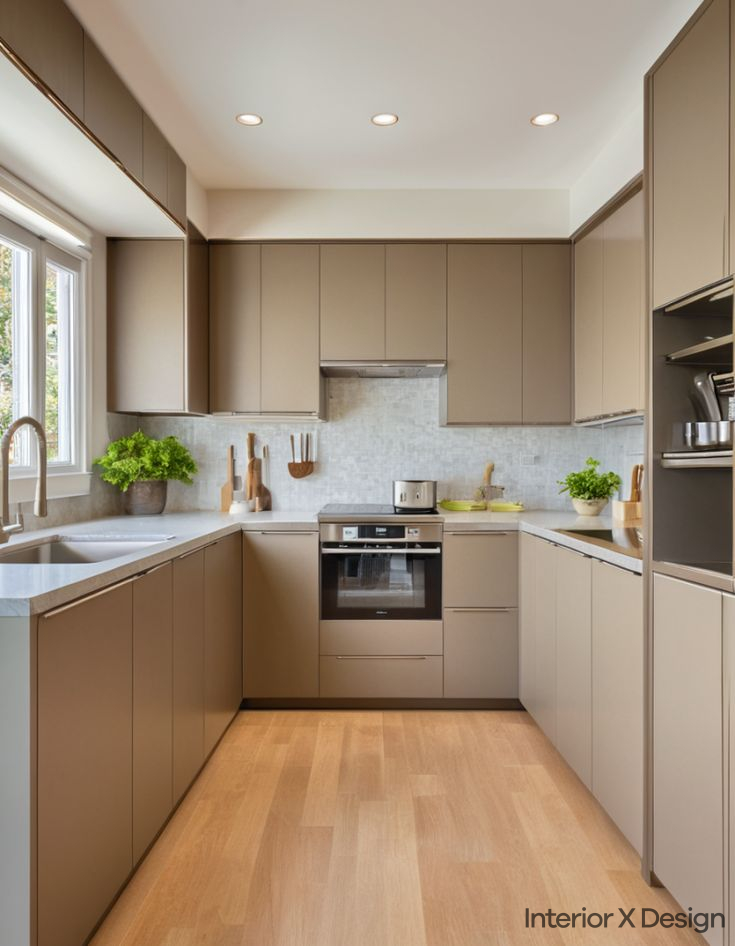Step 1: Plan Your House Construction
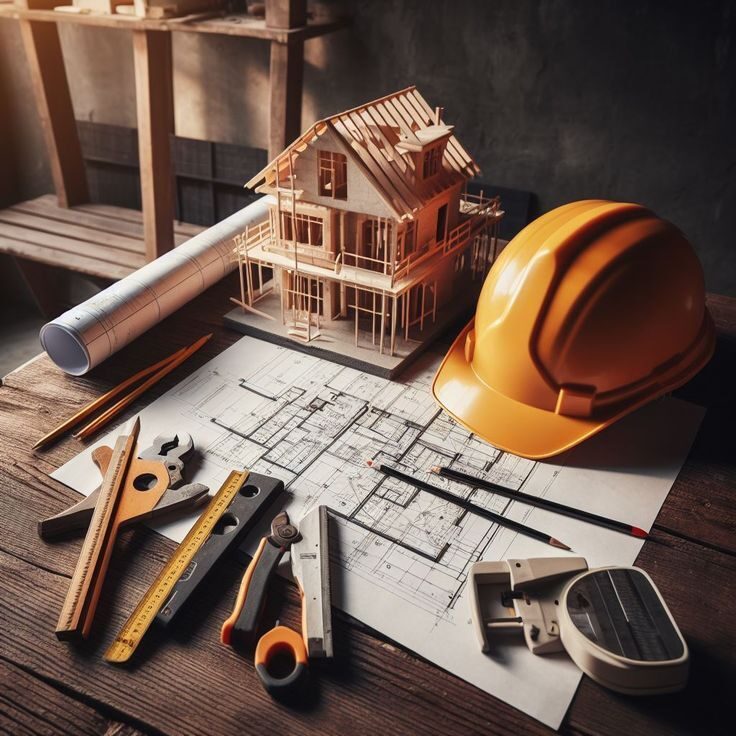
The first step in house construction is the planning phase. House building construction starts with a solid plan. Whether you’re considering a modern home, a traditional style, or something in between, it’s essential to have clear plans. These plans guide every step in the process and ensure that all design, budget, and material choices align with your goals.
1.1 Define Your Budget and Financing
Before you begin, determine how much you’re willing to spend on your new home. This step will influence decisions such as the size of the house, the materials used, and how complex the design will be. Creating a realistic budget is essential for keeping your project on track.
Tip: If you’re unsure about your budget, consider consulting a financial expert to assist in determining how much house construction you can afford. Visit our budgeting tips for your home project for more insights.
1.2 Choosing a Design for Your House
Once your budget is in place, the next decision involves the design of the house. For this, it’s crucial to hire an architect or a designer to help visualize your dream home. Whether you prefer modern house designs or a traditional style, the design should reflect your lifestyle and meet your family’s needs.
Tip: If you need design inspiration, check out some stunning ideas like 5 Modern Duplex House Design Ideas or Top 5 Simple Goa House Designs.
1.3 Getting Permits for House Construction
House construction requires obtaining the right permits before work begins. This involves contacting local authorities and making sure your project complies with zoning laws and building codes. Skipping this step can lead to costly delays and legal issues down the road.
Tip: Before starting, make sure to get advice on legal requirements and consult a contractor or architect for guidance.
Step 2: Site Preparation and Foundation Laying for House Construction

The next step is preparing the land where your house will be built. This phase includes clearing the site, leveling the ground, and laying the foundation of the house.
2.1 Site Clearing for House Construction
The construction team will start by clearing the land. This may involve removing trees, bushes, rocks, or other obstacles that could interfere with the construction.
2.2 Excavation
Once the site is cleared, the next step is excavation. Excavation is essential to create a space for your home’s foundation. The depth and size of the foundation will depend on the house design and the local terrain.
2.3 Pouring the Foundation
The foundation is a critical part of the house construction process. Without a strong foundation, the structure may be compromised. There are various types of foundations, including slab, crawl space, and full basement foundations. Choosing the right type depends on the type of soil and the climate.
Tip: A concrete slab is often used in areas with a hot climate, while a basement foundation is preferable in cooler regions. Our residential section features more about home construction options and ideas.
Step 3: Framing the Structure for House Construction
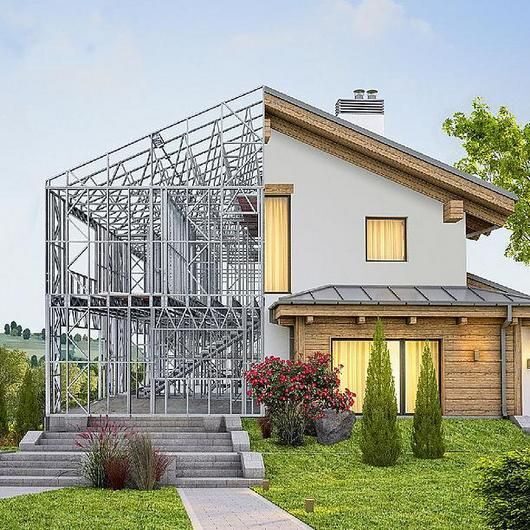
Once the foundation is set, it’s time to start framing the house. This involves constructing the skeleton of the house, including walls, floors, and the roof structure. This is when the house starts to take shape, and you’ll begin to see the size and layout of each room.
3.1 Walls and Floors
The first part of framing includes building the interior and exterior walls. These walls are typically framed with wood or steel studs, depending on the design and location of the house. After the walls are in place, floors are framed, and floorboards are installed.
3.2 Roof Framing for House Construction
Roof framing is the next step in house construction. Roof trusses are installed to form the roof structure, which supports the roof covering materials like shingles, tiles, or metal.
Tip: Make sure to choose quality materials for your roofing. Poor-quality roofing can lead to issues like leaks or poor insulation. For more roofing inspiration, you can read about Top 5 Stunning Bedroom Ceiling Design Ideas.
Step 4: Electrical, Plumbing, and HVAC Installations

Once the basic structure is in place, the next step involves installing the key systems that make your home livable: electrical wiring, plumbing, and heating/cooling systems (HVAC). This is often referred to as the “rough-in” phase.
4.1 Electrical Wiring for House Construction
Electrical wiring is installed throughout the house to provide power for lighting, outlets, and appliances. This is also the stage when electrical panels and service connections are set up.
4.2 Plumbing
Plumbing involves installing the water supply and drainage pipes throughout the house. This includes the main water line, supply pipes to bathrooms and kitchens, and drain pipes.
4.3 HVAC Systems for House Construction
The HVAC (Heating, Ventilation, and Air Conditioning) systems are essential for maintaining indoor comfort. Whether it’s installing ductwork for air conditioning or setting up a heating system, it’s crucial that these systems are installed properly.
Tip: Always hire licensed and experienced professionals for this step. Poorly installed electrical or plumbing systems can cause significant issues later on.
Step 5: Finishing Touches – Interior Design and Exterior Work

After the house’s framework and utilities are in place, the final phase of house construction begins, which involves completing both the interior and exterior of your home. This is when you will see your house take its final shape, from the walls and floors to the decoration and landscaping.
5.1 Interior Design
Now comes the fun part – designing the interiors of your new home. This includes installing drywall, painting walls, laying flooring, and adding decorative elements. You can also choose custom furnishings and design your rooms according to your personal style.
For help with designing your dream interior, consider consulting Interior Designers in Delhi.
5.2 Exterior Work for House Construction
The exterior of the home includes landscaping, final touches to the roofing, windows, and doors. Landscaping is key to giving your house curb appeal, while finalizing the exterior ensures that your home is energy efficient.
Tip: Focus on both aesthetics and practicality in landscaping, considering both the style of your house and the climate in your area. For example, 10 Wooden Flat Residential Safety Door Designs can enhance the exterior appeal.
Conclusion: The Complete House Construction Journey
House construction is an exciting but detailed process that requires careful planning and execution. By following these five essential house construction steps—planning, site preparation, framing, utilities installation, and final touches—you ensure that your home is built with care and attention to detail.
Along the way, it’s important to work with professionals, such as architects, contractors, and interior designers, to guide you through each stage of the process. The effort will be worth it when you step into your new, beautiful home.
For more information and design inspiration to help you on your house construction journey, be sure to explore our Interior X Design Blog for more articles, tips, and ideas.

